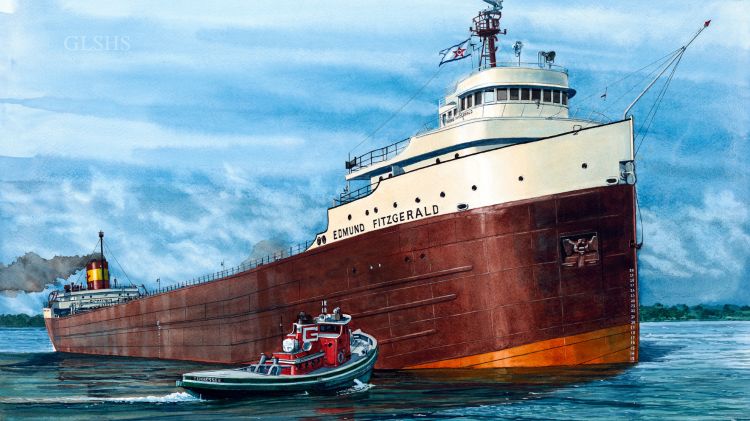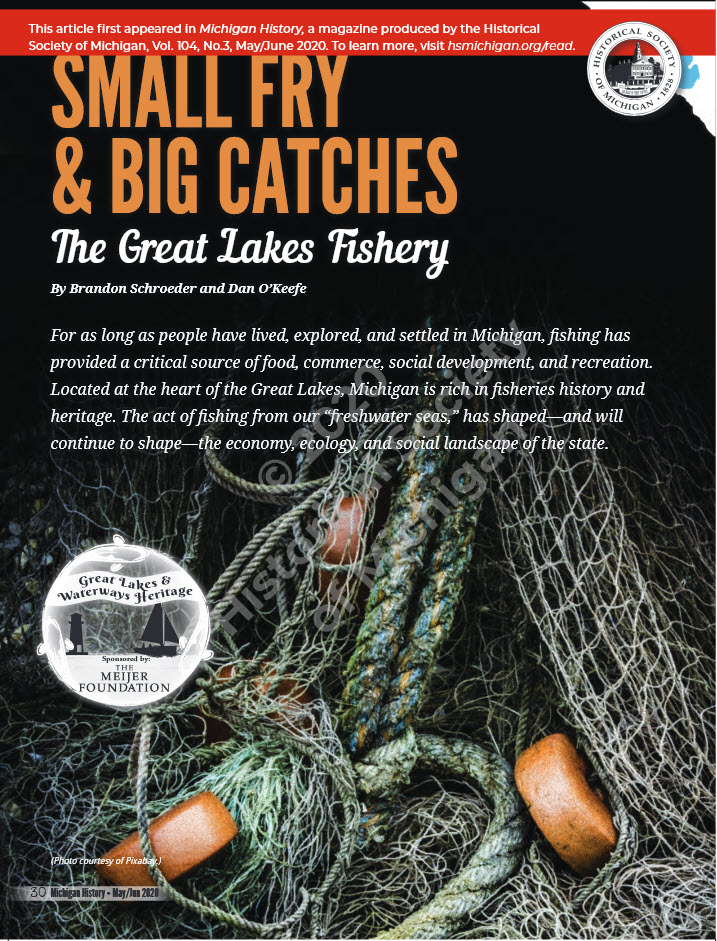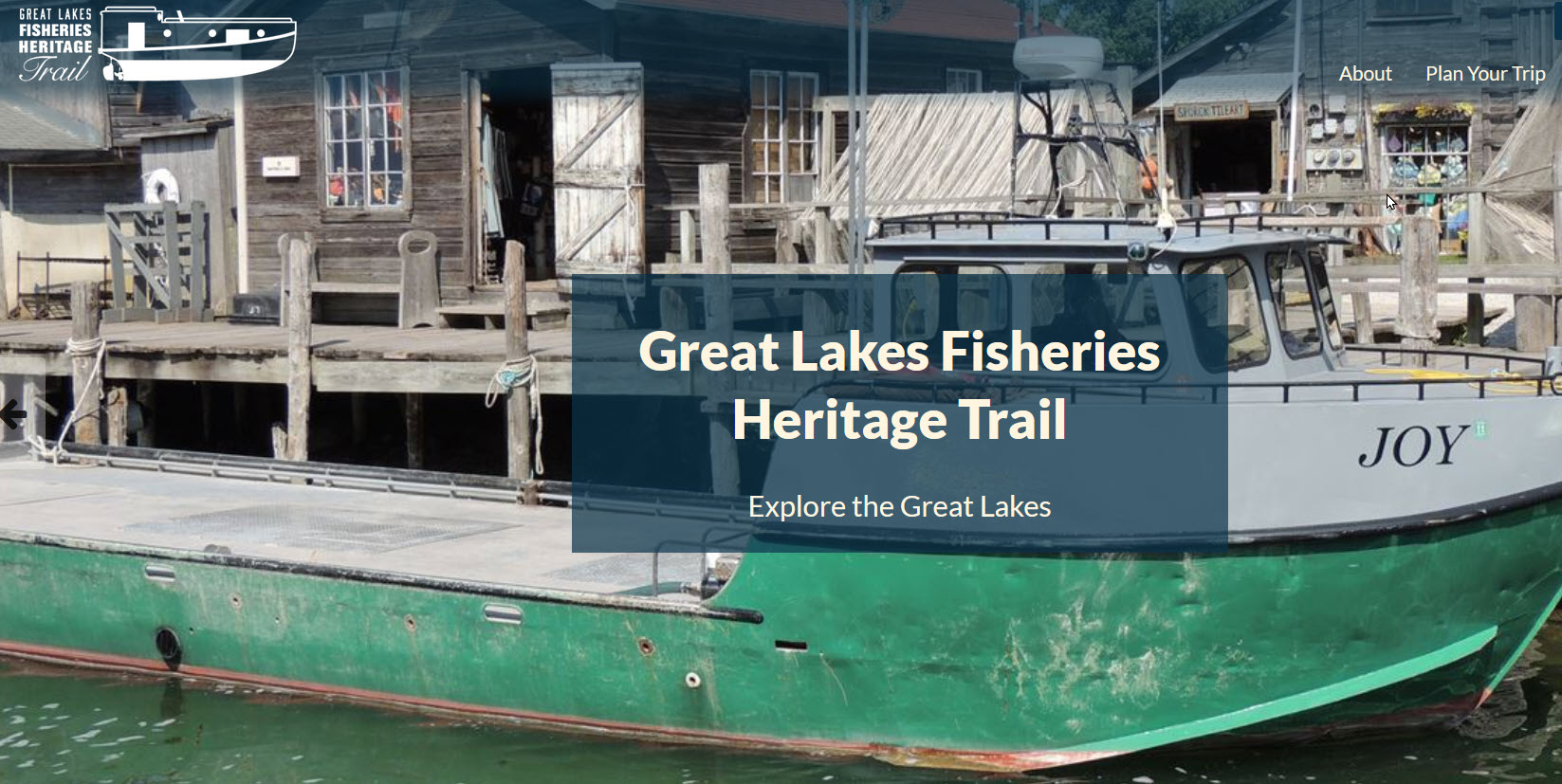Stories offer rich history of the Great Lakes’ legacy
Transportation of goods, shipwrecks, commercial and recreational fishing, all tell the tale of human connection to the water.

As autumn leaves change and fall around the Great Lakes region, history fans – and fans of Gordon Lightfoot’s song, “The Wreck of the Edmund Fitzgerald” – pay homage to the many ships and crews that have sailed the Great Lakes. This year is the 50th anniversary of the Lake Superior tragedy. While the song highlights one deadly wreck in 1975, all of the lakes can be a fearsome place for sailors, especially during the gales of November.
The lakes have been used for trade since the 17th century when fur traders navigated the waters. In the 19th century, transporting bulk materials such as iron ore and limestone became common. Over time shipping expanded and ships grew in size to carry more tonnage. Shipping remains an important aspect of the region’s economy today. The history of the ships, lighthouses, and sailors who navigate the Great Lakes offer fascinating stories. Learn more about the Edmund Fitzgerald by visiting The Great Lakes Shipwreck Museum website, or the museum (May 1-Oct. 1) at Whitefish Point in the Upper Peninsula.
Another museum offering much to learn about shipwrecks is the Thunder Bay National Marine Sanctuary in Alpena, MI (check online for hours of operation). The website tells the stories of the nearly 100 shipwrecks in the Lake Huron sanctuary.
But shipping is not the only thing that draws us to the lakes.
Fishing an important part of our history
For as long as humans have lived in the Great Lakes basin, fishing has also been an important ecological, economic, and recreational activity.
Great Lakes fishery heritage tells more than the story of Great Lakes fish and the people  who catch them. This rich vein of history connects us to aquatic ecosystems, biodiversity, water quality, and environmental change. Fisheries serve as a gauge of resource sustainability and quality of life for communities around the state.
who catch them. This rich vein of history connects us to aquatic ecosystems, biodiversity, water quality, and environmental change. Fisheries serve as a gauge of resource sustainability and quality of life for communities around the state.
The article Small Fry & Big Catches gives a broad overview of the history of the Great Lakes fishery. Written by Michigan Sea Grant Extension Educators Brandon Schroeder and Dan O’Keefe, the article describes the important role fishing has served in the Great Lakes, and the evolution of fisheries management, improvements, and coming challenges.
Great Lakes Fisheries Heritage Trail Network
Great Lakes fisheries heritage sites throughout Michigan offer residents and visitors a unique opportunity to explore and experience the dynamic social, technological, and environmental changes that have shaped today’s fishery. The interactive website can help you learn more about the trail network and partnerships. Michigan Sea Grant is a leadership partner for the regional network.
Michigan Sea Grant is committed to research, education, and outreach through partnerships with people and organizations to foster healthy Great Lakes coastal ecosystems, communities, and economies. A collaborative effort of the University of Michigan and Michigan State University and its MSU Extension, Michigan Sea Grant is part of the NOAA-National Sea Grant network of 34 university-based programs.

This article was prepared by Michigan Sea Grant under award NA24OARX417C0157-T1-01 from the National Oceanic and Atmospheric Administration, U.S. Department of Commerce through the Regents of the University of Michigan. The statement, findings, conclusions, and recommendations are those of the author(s) and do not necessarily reflect the views of the National Oceanic and Atmospheric Administration, the Department of Commerce, or the Regents of the University of Michigan.



 Print
Print Email
Email




